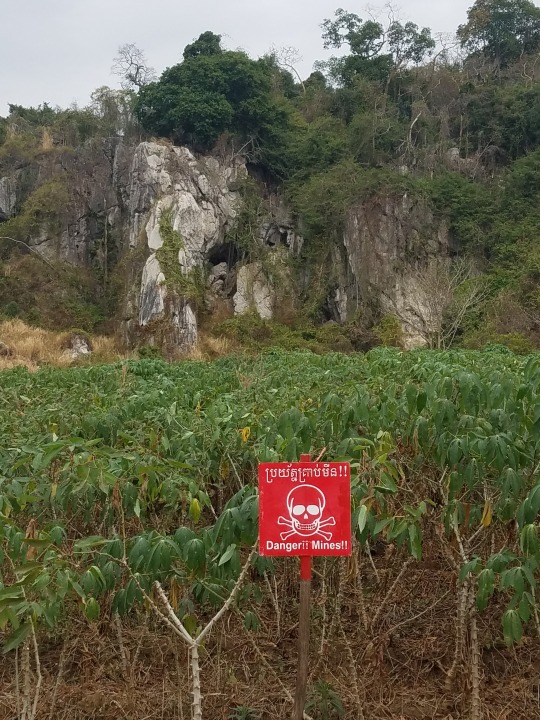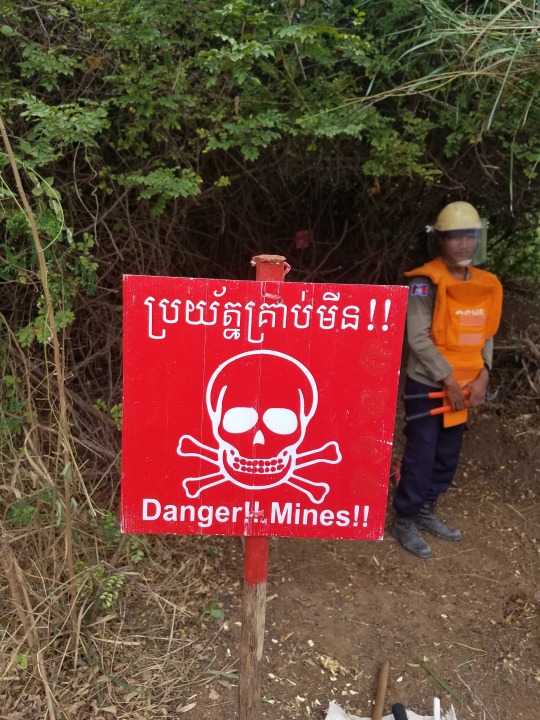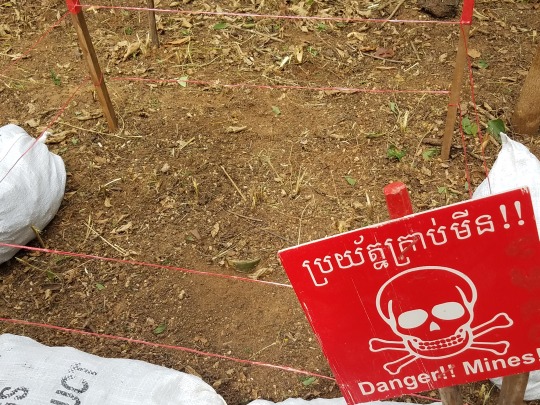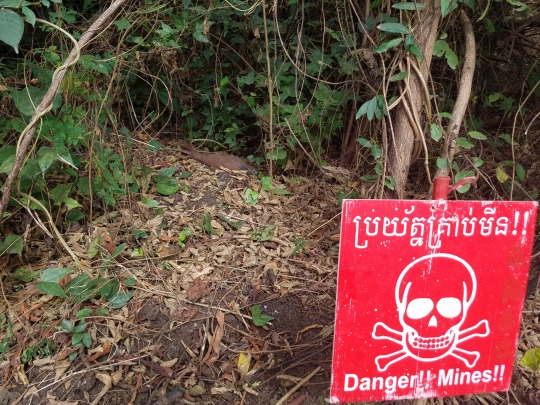#UXO means unexploded ordnance
Explore tagged Tumblr posts
Text

At least 184 civilians were killed and 856 injured in Ukraine in August, - UN This is the second-highest number of civilian casualties in 2024, after July. Almost all the victims of the war died from missile, bomb and artillery strikes by the Russians.
Civilian casualties August 2024
Total civillian casualties: 1, 040
184 killed (174 in Ukraine controlled territory; 10 in occupied territory // 107 men ; 69 women ; 4 boys ; 4 girls // 182 died due to explosive weapons with wide area effects ; 2 died due to mines and UXO remnants)
856 Injured (772 in Ukraine controlled territory; 84 in occupied // 434 men ; 371 women ; 32 boys ; 19 girls // 842 injured due to explosive weapons with wide are effects ; 14 injured due to mines and UXO remnants)
Source: The Ukrainian Review
#Ukraine#war statistics#statistics#casualties#war#civilian casualties#UXO means unexploded ordnance#uxo#mines#russia is a terrorist state#screen reader friendly
21 notes
·
View notes
Photo

New HeroRAT recruits ready for the real thing Last February eight fully trained HeroRATs from the APOPO training center in Morogoro, Tanzania arrived in their new home in Siem Reap, Cambodia. APOPO's Mine Detection Rat Field Coordinator Mark Shukuru travelled with them and is happy to announce that after a short period of acclimatization and getting to know their new Cambodia handlers, the new mine detection rats have all passed their assessment tests and are ready for the real minefields. The assessment tests took place on May 4th and 5th. Overseen by our partner Cambodian Mine Action Center (CMAC), the tests met the International Mine Action Standards (IMAS) meaning each rat had to search an area of 200m2 in under 40 minutes and find every single landmine or unexploded ordnance (UXO), with no rat permitted more than 2 false positives. All the rats passed on the first go except for one: Idaya. In April and May the temperatures in Cambodia rise and already by 8am in the morning it starts to get very hot. Idaya was the last rat to be tested on May 4th and half way down the box she started showing signs that the heat was getting to her. She was promptly removed before she could find all the landmines/UXO and technically failed her test. The next morning she was retested while it was still cool and as expected she passed perfectly. "It was agreed by the team and CMAC that Idaya's test was conducted whilst out of the acceptable heat range so we are all happy that she proved this the very next morning. Great news and a true reflection of the hard work from the team" said Paul McCarthy, APOPO's Program Manager for Cambodia. Over the past few weeks the Cambodian handlers have been patiently helping the rats get up to speed for their livelihood- and life-saving mission. The fact that all the new recruits have passed their CMAC assessment tests shows not only what a great job their new handlers are doing but also shows how adaptable these amazing little creatures are. These eight HeroRATs will be providing much needed extra capacity to the project, joining the other mine detection rats that have been there since 2015 supporting our great partner CMAC. In that time, rats have significantly increased the speed of landmine detection, speeding up the daily square meter coverage and clearance, and allowing people to get back on their land as quickly as possible.
128 notes
·
View notes
Photo




I traveled to a mine field last week. It was an incredible experience to look out into a field, or look at a mountain and wonder how many mines were out there; to know that it would likely mean death to walk into the field, to go for a hike. Or worse, to know that a man died in this field trying to farm crops for his family. To look at a swath of land, knowing that it’s unusable by nothing but insects, small critters, and the vegetation around it, was so foreign to me, but for Cambodians a very natural fact of life, this thought was heart wrenching.
However, through the great work of many organizations, the future is looking much brighter. It was an absolute honor to see first hand the people working every day on clearing this beautiful country from landmines and unexploded ordnances (UXOs), such as the mortar and landmine pictured above. They work so hard and diligently at this important task. This team works 6 days a week while they’re in the field because clearing even one field is incredibly time consuming. Because they have to first cut down the bushes and overgrowth covering the 20-40-year-old mines before they can even properly look for any UXOs and landmines. It’s incredible to me that these men and women readily go into the field and cut down the overgrowth. Their jobs take such courage and bravery, they’re incredibly inspiring individuals.
This field was formerly a Khmer Rouge base camp and they lay mines around the surrounding area in the 1980′s as they were fleeing towards the Thai border. It was around 36,000 SQ meters, and the team expected it to take them roughly 16 working days to completely demine the field. It was a truly incredible experience visiting this mine field.
2 notes
·
View notes
Link
During the conflict in Vietnam, American bombers dropped some two million tons of bombs over the country as part of a covert attempt to wrest power from communist forces.
The U.S. bombing of Laos (1964-1973) was part of a covert attempt by the CIA to wrest power from the communist Pathet Lao, a group allied with North Vietnam and the Soviet Union during the Vietnam War.
The officially neutral country became a battleground in the Cold War between the United States and Soviet Union, with American bombers dropping over two million tons of cluster bombs over Laos—more than all the bombs dropped during WWII combined. Today, Laos is the most heavily bombed nation in history. Here are facts about the so-called secret war in Laos.
Where is Laos?
Laos is a landlocked country bordered by China and Myanmar to the North, Vietnam to the East, Cambodia to the South and Thailand and the Mekong River to the West.
Laos' proximity to China made it critical to President Eisenhower to defend against communism.
Its proximity to Mao Zedong’s China made it critical to Dwight D. Eisenhower’s Domino Theory of keeping communism at bay. “If Laos were lost, the rest of Southeast Asia “If Laos were lost, the rest of Southeast Asia would follow,” Eisenhower told his National Security Council. On the day of his farewell address in 1961, President Eisenhower approved the CIA’s training of anti-communist forces in the mountains of Laos. Their mission: To disrupt communist supply routes across the Ho Chi Minh Trail to Vietnam.
Eisenhower’s successors in the White House: John F. Kennedy, Lyndon B. Johnson and Richard Nixon, all approved escalating air support for the guerrilla fighters, but not publicly. The 1962 International Agreement on the Neutrality of Laos, signed by China, the Soviet Union, Vietnam, the United States and 10 other countries, forbid signees from directly invading Laos or establishing military bases there. The secret war in Laos had begun.
History of Laos
Long before the Cold War, Laos had a history of interference from its neighbors. Fa Ngum founded the first recorded Lao state of “Lan Xang,” or “The Kingdom of a Million Elephants,” in 1353. From 1353-1371, Fa Ngum went on to conquer most of today’s Laos and parts of what is now Vietnam and Northeast Thailand, bringing Theravada Buddhism and Khmer culture from the kingdom of Angkor (in today’s Cambodia) with him.
Over the centuries, his conquered neighbors fought back, and the Thai people dominated large swaths of Laos from the late 1700s to the early 1800s. What we know as Laos today was built from an assemblage of different ethnic groups with distinct languages and cultures.
A man walks past a 30+ year-old bomb crater in the middle of a village in Laos. Decades-old craters are all over the village.
Europeans entered the fray in 1893, when France declared Laos part of French Indochina. To the French, having Laos as a protectorate was a means to control the Mekong River, a valuable trade route through Southeast Asia.
France’s grasp on Laos first slipped in 1945, when the Japanese occupied Laos in the closing days of World War II. When atomic bombs fell on Japan, Laos declared its independence under the short-lived Lao Issara (“Free Laos”) government of Prince Phetsarath in 1945. The French regained power the following year.
Laos achieved full independence in 1954 following the victory of communist Việt Minh leader Ho Chi Minh over the French at the bloody Battle of Điện Biên Phủ. The ensuing Geneva Accords split Vietnam into North and South Vietnam and stipulated that the French relinquish their claims in Southeast Asia. The agreement was not signed by the United States, who feared that in the absence of French influence, Southeast Asia would fall to communist forces.
Laos Civil War and the Pathet Lao
The United States watched closely as the Pathet Lao gained popularity in newly-independent Laos. The Pathet Lao was a communist group founded at Viet Minh headquarters in 1950 during the French war. Largely dependent on Vietnamese aid, their leader was Prince Souphanouvong, the “Red Prince.” Born to a prince of Luang Prabang and a commoner, his education in Vietnam led him to become a disciple of Ho Chi Minh and, later, to lead the opposition against his half-brother, Souvanna Phouma, who was Prime Minister of Laos five different times (from 1951-1954, 1957-1958, in 1960 and again from 1962-1972) and preferred a coalition government balancing the Pathet Lao with more conservative forces.
An armed guard (far right) standing next to (L-R) Souvanna Phoum, Neutralist Premier of the Laotian Coalition Government, his pro-communist, half-brother, Souphanouvong, and General Singkapo, commander-in chief of the Pathet Lao Army, 1963.
Phouma’s hold on power was tenuous at best. Under his rule, government troops and the Pathet Lao began to clash in the Northeast along the border of Vietnam. Publicly, President Kennedy announced his support for neutralizing Laos—though what neutralization looked like on paper was far different from what it was in practice.
The CIA’s Secret Army
In 1960, the CIA approached Vang Pao, a major general in the Royal Laotian Army and a member of the Hmong minority in Laos, to be the chief of their secret army to push back the communist Pathet Lao. The Hmong made up an ethnic group that had originated in China and lived in the remote mountains of Laos, often in extreme poverty, and had a history of evading authority. They had been at odds with the lowland Lao majority for centuries, and the CIA exploited this history of conflict to their benefit.
Charismatic and prone to pacing while he talked, Vang Pao had experience fighting both the French and the Japanese. His followers praised him for his bravery in fighting alongside his men. The CIA’s Operation Momentum armed and trained the Hmong to take on the Pathet Lao in the growing proxy war.
The U.S. Bombing of Laos
A ground war in Laos with U.S. forces was not on the table. President Kennedy wrote as early as 1961 that, “Laos…is a most inhospitable area in which to wage a campaign. Its geography, topography, and climate are built-in liabilities.” Bombing Laos was seen as a safer means of cutting off communist supply lines into Vietnam before they could be used against American troops.
The U. S. and Laotian governments permitted newsmen a rare glimpse of a military base in Laos with 250-pound bombs used to fight against the North Vietnamese in northern Laos.
The U.S. Air Force began bombing targets in Laos in 1964, flying planes like AC-130s and B-52s full of cluster bombs on covert missions based out of Thailand. The United States eventually dropped the equivalent of a planeload of bombs every eight minutes, 24 hours a day, for nine years, according to Al Jazeera.
The bombing focused on disrupting communist supply chains on the Ho Chi Minh Trail and Sepon (also spelled Xépôn), a village near a former French air base now controlled by North Vietnam. In 1971, Sepon was the target of the failed Operation Lam Son, when the U.S. and South Vietnam attempted to block access to the Ho Chi Minh Trail.
Dave Burns, a member of the U.S. Air Force’s 16 Special Operations Squadron, flew missions over Laos out of Ubon, Thailand. He recalls, “Sepon was the one place in Laos that we did not want to fly into. The village was at a crossroads of three highways leading in from Vietnam: the Mu Gia Pass, the Ban Karai Pass, and the Barthelme Pass. The highways then headed south to the Ho Chi Minh Trail. It was highly defended with all sorts of anti-aircraft guns. Going there was a guarantee of being hit or being shot down.”
Air America
Air America was the lifeblood of the CIA’s Laos operation, transporting personnel, food and supplies to and from remote bases. As a former CIA officer explained: “We’d negotiate with the tribal groups. If you don’t make a deal with them, give them aid, the communists will do it, and then they’ll join with the communists.” The CIA set up medical facilities with doctors, started schools and offered protection from rivals.
Air America was also transporting more illicit goods. In the 1979 book Air America by Christopher Robbins, later immortalized in the fictional "Air America" movie starring Mel Gibson and Robert Downey, Jr., Robbins reports on how opium from Lao poppies was transported on American planes.
Laos Bombing Casualties and Legacy
By 1975, one-tenth of the population of Laos, or 200,000 civilians and members of the military, were dead. Twice as many were wounded. Seven hundred and fifty thousand, a full quarter of the population, had become refugees—including General Vang Pao himself. Declassified documents show that 728 Americans died in Laos, most of whom were working for the CIA. The secret war in Laos, or the Laos Civil War to many who lived through it, set a precedent for a more militarized CIA with the power to engage in covert conflicts around the world.
Cooperative Orthotic and Prosthetic Enterprise (also known as COPE) is a learning center where visitors can inform themselves about the UXO problem in Laos.
In Laos, the legacy of U.S. bombs continues to wreak havoc. Since 1964, more than 50,000 Lao have been killed or injured by U.S. bombs, 98 percent of them civilians. An estimated 30 percent of the bombs dropped on Laos failed to explode upon impact, and in the years since the bombing ended, 20,000 people have been killed or maimed by the estimated 80 million bombs left behind.
In 2016, President Barack Obama became the first sitting U.S. president to visit Laos. He pledged an additional $90 million in aid to remove unexploded ordnance on top of the $100 million that had been spent previously. The work of cleaning out unexploded bombs from the soil continues.
Jessica Pearce Rotondi is the author of What We Inherit: A Secret War and a Family’s Search for Answers.
from Stories - HISTORY https://ift.tt/363p7IE December 05, 2019 at 08:24PM
0 notes
Text
Geophysics

http://www.assignmentpoint.com/science/geography/geophysics.html
Geophysics is: The subsurface site characterization of the geology, geological structure, groundwater, contamination, and human artifacts beneath the Earth's surface, based on the lateral and vertical mapping of physical property variations that are remotely sensed using non-invasive technologies. Many of these technologies are traditionally used for exploration of economic materials such as groundwater, metals, and hydrocarbons. (Focuses on the key targets of interest - a key consideration in understanding the realm of Environmental and Engineering Geophysics).
Geophysics is: The non-invasive investigation of subsurface conditions in the Earth through measuring, analyzing and interpreting physical fields at the surface. Some studies are used to determine what is directly below the surface (the upper meter or so); other investigations extend to depths of 10's of meters or more. (Underscores the near surface aspect).
Types of Problems Addressed:
· Infrastructure (highways and bridges)
· Groundwater (exploration and contaminant mapping)
· Geohazards (earthquake mitigation and collapse structure mapping)
· Urban (utility mapping, underground storage tank location)
· Geologic Mapping
· Archeology
· Forensics (i.e., illegal burials, etc.)
· Civil Engineering / Non-Destructive Testing (NDT)
· So-called "Brownfield" and Landfill Investigations
· Unexploded Ordnance (UXO detection and characterization)
· Dam Safety
Benefits of Geophysics:
Non-destructive. It is ideal for use in populated areas, such as cities, where many of today's environmental and engineering issues arise. It also means an archeological site can be examined without destroying it in the process.
Efficiency. It provides a means of evaluating large areas of the subsurface rapidly.
Comprehensiveness. Combinations of methods (i.e. multi-disciplinary methods) provide the means of applying different techniques to solve complex problems. The more physical properties that are evaluated, the less ambiguous the interpretation becomes.
Cost-effective. Geophysics does not require excavation or direct access to subsurface (except in the case of borehole methods where access is typically by drilled holes). This means vast volumes of earth can be evaluated at far less cost than excavation or even grid-drilling methods.
Proven. The majority of techniques have been in existence for more than a half-century and are mature, yet still relatively undiscovered and underutilized by decision-makers who face complex environmental and engineering problems.
0 notes
Text
Day 9 - 18th May
Torrential rain greeted us this morning, we are assured that from tomorrow the weather will improve but we will wait to see …. the rainy season is not due to start for another month or so, officially, but it seems that we have not picked the best time to travel here! After a fairly disappointing afternoon in the capital yesterday we hope to improve our impression of Vientiane today, although the weather does not help to lift our spirits. A tuk tuk is summoned to take us to visit COPE, an association working to help landmine victims. The centre provides an understanding of the American/Vietnam war, the lasting impact of unexplored ordnances (UXO) in the area and the efforts underway to clear them. The COPE organisation also trains local staff to manufacture prosthetics, orthotics and related rehabilitation activities and helps with the cost of the services for those who cannot afford them.
The museum is a stark reminder of the past and its ongoing impact on the people of Laos, the initial exhibit illustrates a cluster bomb (bombies as the locals call them) these work by scattering explosives over a wide area, each with a killing radius of 30 meters. In tests 30% of these devices did not explode meaning that out of 270 million cluster bombs dropped there could have been 80 million unexploded ones once the bombing finished - these were scattered over large areas of Laos and can be accidentally triggered by everyday activities; digging the ground for crops, running around and playing games, heat from a fire etc. making life extremely hazardous for the local people. The exhibition included many stories of victims, young and old, who told their stories including how the organisation had helped them to move on with their lives. There were everyday objects that the locals had made from the ordnance cases that they had collected and a warning to tourists not to buy the items that had been produced as this would only encourage the locals to go foraging for more, potentially putting their lives in great danger. The centre exists on some grants and donations from visitors, we were only too happy to make a donation and reflect on how different our lives are from the Lao people.
Around midday we were transferred to the airport for our flight into Hanoi, Vietnam ….. we were booked on to a shared flight between Vietnam Airlines and Lao Airlines, the later refused to check us, and another couple in, and a tense time followed whilst we waited someone from Vietnam Airlines to deal with the issue, wondering if we would be able to board the flight at all …. finally someone appeared but the process of checking us in seemed to take longer than the 1 hour 10 minute flight that we were taking! Finally all was resolved and we arrived into Hanoi, quite a contrast to Lao, and were driven to our hotel, which is situated in the bustling ‘old quarter’ of the city. We treated ourselves to a bottle of wine with the local speciality fish dish as Mike had changed some dollars into local currency and had become a millionaire ……. just $50 equals 1.1 million Dong ( another bizarre exchange rate to get used to!)
0 notes